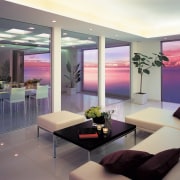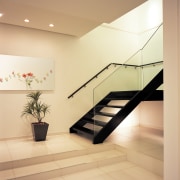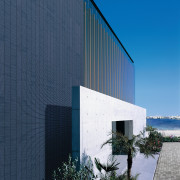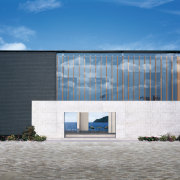Far horizons
Inspired by the Japanese concept of shakkei, or borrowed scenery, this house is at one with the ocean
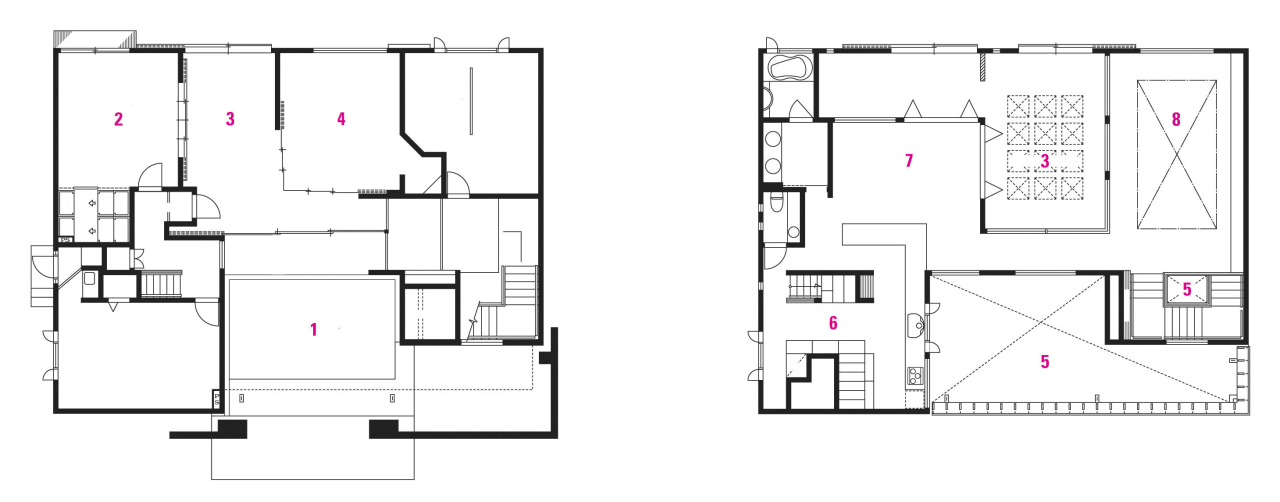
Even the most contemporary design can be influenced by traditional architecture. For this oceanfront house in Japan, the local architectural heritage had a strong role to play.
Architect Tadaharu Izumisawa of Sumitomo Realty and Construction says the idea of a house opening up to the ocean was inspired by the shakkei or borrowed scenery concept. Traditionally, this principle determines that the distant vista is incorporated into the composition of the Japanese garden.
The architect says it was also essential that the design acknowledged the vast power of the ocean. The house needed to have a strong architectural presence, so that it would not be an insignificant addition to the landscape.
"The principle of adopting nature's strength was embodied in the architecture by avoiding a demarcation between the ocean and the structure," he says.
From the front, the house appears as a substantial, rectangular volume, with a layered facade that is reminiscent of the traditional Koshi screens that typically form the front of a Japanese house. To provide a modern interpretation, however, the wood battens of this house are combined with a glass wall that encloses a double-height void.
"The glass wall brings plenty of natural light into the interior. At the same time it protects the owner's privacy, and provides security and shelter from the sea breezes," says Izumisawa. "It also acts as a division between the inside and outside, providing psychological comfort."
The rest of the facade features dark tiles, and a raw concrete wall that wraps around the edge of the house. These hard materials provide a visual balance to the lighter elements, yet do not overpower the exterior.
"Combining wood with these hard surfaces brings a warm feel to a modern design," says Izumisawa.
To avoid any sense of discontinuity with the facade, the architect incorporated another traditional Japanese feature a doma, which takes the role of a passage.
"The doma is an open space that allows a view right through the house, from the front to the ocean," the architect says. "Traditionally, the flooring of the doma represents the earth. It may be mud, stones or tiles paved at the same level as the ground. It is always representative of the outdoors in this case the doma is designed to convey the sense of the ocean. Similar materials or patterns typically feature on the ceiling to provide an even more intimate relationship between the inside and out."

This close connection is also reinforced by floor-to-ceiling glazing in the second-floor living areas. To ensure these rooms would also be spacious, Izumisawa varied the standard 910mm construction modules of most Japanese houses, specifying extra-wide, laminated timber floor joists.
The rest of the house is built using a two-by-four wood construction method a system pioneered by Sumitomo Realty and Development. This construction method is well suited to a country prone to frequent earthquakes and typhoons.
Other traditional Japanese features that have been incorporated into the design include a hanare tea-making room on the ground floor.
"Hanare originally meant detached from the main building," says Izumisawa. "It used to be popular to make a Chashitsu a room to serve tea in a hanare setting. In this house, we successfully incorporated a hanare inside the house by creating a semi-outdoor space. The room is open to the doma, and more significantly, to the spectacular sea view beyond."
Story by: Colleen Hawkes
Home kitchen bathroom commercial design
Classic looks, contemporary efficiency
Diving into nature
Personality plus


